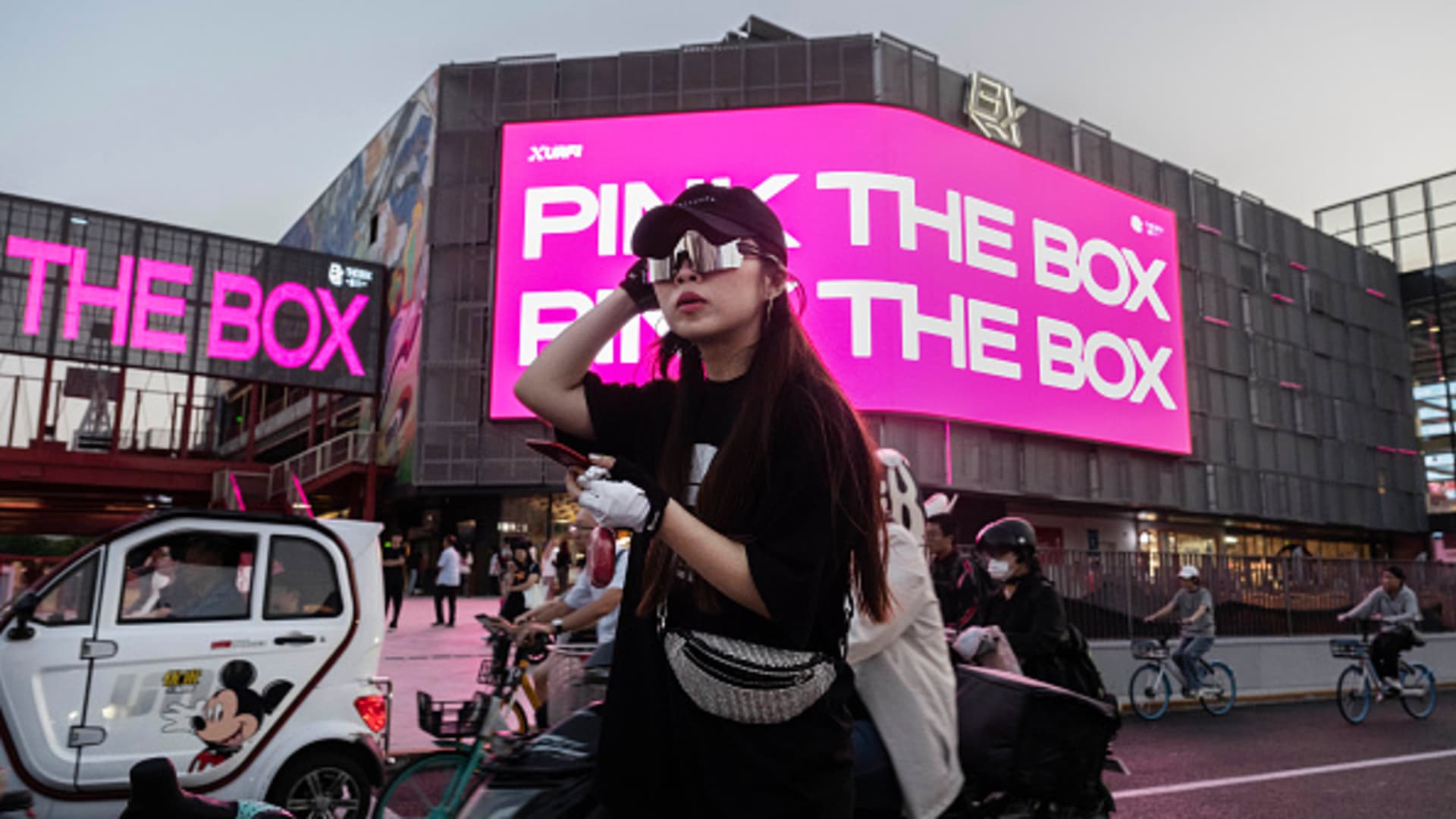BEIJING — China’s consumer spending still isn’t growing as fast as it did before the pandemic, analysts said.
Retail sales for the Sept. 29 to Oct. 5 holiday period rose by 9% from a year ago, according to state media reports of Ministry of Commerce data. The figures did not include Oct. 6, the final and eighth day of the Golden Week holiday.
While that marked a pickup in pace from August, the multi-year trend in retail sales indicates less than 3% growth a year since the start of the pandemic, according to estimates from Christine Peng, head of Greater China consumer sector at UBS.
“What we are saying is there is a recovery but it’s going to be gradual,” she told CNBC in a phone interview Tuesday. “Nowadays the consumption growth is still way below the pre-Covid level.”
China’s retail sales fell by 0.2% in 2022, according to official figures. Retail sales had grown by 8% in 2019.
Consumers have started to spend more money, but they still maintain a cautious attitude when it comes to how they are spending the money.Christine PengUBS
UBS expects consumption growth to pick up to 5% or 6% toward the end of 2024, Peng said, noting there’s “no way” retail sales can go back to 9% in the near future due to low consumer confidence.
She also pointed to the impact of the property slump — since much of household wealth is in real estate — and a decline in government spending due to local debt troubles. Consumers remain uncertain about future income amid government regulatory tightening, she noted.
“Consumers have started to spend more money, but they still maintain a cautious attitude when it comes to how they are spending the money,” Peng said.
The long Chinese Golden Week holiday that ended last week saw domestic tourism rebound to around pre-pandemic levels. Overseas travel had yet to fully recover to 2019 levels.
Economic uncertainty contributed to Chinese residents’ preference to travel domestically, said Imke Wouters, partner at consulting firm Oliver Wyman. The firm surveyed more than 3,800 affluent Chinese consumers in September and found the “casual luxury shopper” was more cautious due to the economy.
However, Wouters said that when affluent consumers traveled domestically, a significant number chose Hainan. The tropical province is known for its duty-free shopping malls and natural scenery.
During the latest holiday, tourist visits to Hainan went up by 15% versus the peak year of 2021, Wouters pointed out.
China has sought in the last few years to build up Hainan as a duty-free shopping center. Prior to the pandemic, many Chinese had traveled to Europe and other countries to buy luxury goods.
Chinese luxury spending at home and abroad in September was about 80% what it was in 2019, up from the 70% to 75% recovery seen in August, according to HSBC, citing Global Blue data for duty-free shopping.
In the Asia-Pacific region, Chinese spending on luxury goods has already recovered to 2019 levels, the report said. But in continental Europe such spending is only about half of where it was prior to the pandemic, HSBC said.
In contrast, tourists from the U.S. and Middle East are spending about 250% more on luxury goods in Europe than they did prior to the pandemic, the report said.
Consumer spending has lagged China’s overall economic growth since the pandemic started in early 2020. The country ended its stringent Covid-19 restrictions in late 2022, but the economy’s initial recovery has slowed amid a real estate market decline and a drop in exports.
More recently, different parts of the vast economy have started to show a pickup in growth.
“Some casual dining restaurant chain[s] have been telling us that same-store sales [have] recovered to 90% of the 2019 level,” Peng said. She said that’s “a pretty meaningful acceleration” compared to the summer, when same-store sales were 70% to 80% of the 2019 level.
Peng said retailers selling toys and groceries have seen sales per store recover to 90% of the 2019 level, while sportswear brands saw about 20% to 30% sales growth versus the holiday last year.
Appliances and furniture sales were more muted, as were sales of premium products such as baijiu, Peng added. “Consumer spending has come back, but some of the categories that get exposure to corporate spending is not returning to the pre-Covid 2019 level.”
China is set to report September retail sales on Oct. 18, along with third-quarter GDP.
